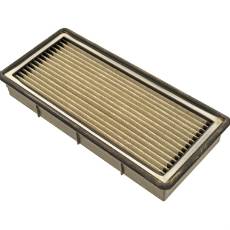Air pollution does not only happen on the streets – it can be actively occurring right inside your private spaces. Even inside the home, dust mites, dirt and other allergens can thrive. And with spring time on the horizon, it evokes not only of visions of flower buds and blooming trees but also of lung irritants that can worsen the condition of those with asthma and allergy problems.
The trouble is that if you’re using an ordinary vacuum cleaner, you’re not actually removing dust and dirt from your home – just ‘rearranging’ them to occupy other nooks and crannies around the house. There might be some trapped inside the bag or cyclone filter but the rest of it will just float straight back into the room.
For those suffering from asthma, lung problems or seasonal allergies, you may find that a HEPA (high-efficiency particulate air) filter in your conventional vacuum cleaner is worth the investment any season of the year.

What is HEPA?
HEPA or high efficiency particulate air is a type of filter used to trap a large amount of minute particles or elements that ordinary vacuum cleaners won’t be able to catch.
True or Absolute HEPA Filters
True or absolute HEPA filters have passed a rigorous test and contain serial numbers printed on the filter based on their capacity to trap at least 99.97 percent of particles such as dust, mites, pores, pollen and pet dander of .3 microns.
HEPA Type Filters
HEPA type or HEPA like filters bear very similar resemblance with true or absolute HEPA filters but they do not meet the same standards that are required with the latter. They can capture only 85 to 90 percent of particles and this filtration efficiency can even be significantly lower if particles are 1 micron and below.
Telling the Difference
True or absolute HEPA filters always have its serial number and test results printed on the filter. Make sure the filtration efficiency is at 99.97 percent or above for particles of .3 microns, which is the testing standard. There are filters that can perform better with both smaller and larger particles.
How HEPA filters work
 Filters like sieves have holes big enough to trap some particles and small enough to let other particles through. To be able to catch smaller particles, a very fine filter is needed but putting one in an ordinary vacuum cleaner would just clog it up very quickly and stop the machine from working.
Filters like sieves have holes big enough to trap some particles and small enough to let other particles through. To be able to catch smaller particles, a very fine filter is needed but putting one in an ordinary vacuum cleaner would just clog it up very quickly and stop the machine from working.
HEPA filters in vacuum cleaners have one or more outer filters to trap larger particles. Inside the filters, there is a mat of glass fibers capable of trapping not only small dust particles but also stopping mold spores and even some bacteria and viruses.
How Much Can HEPA Filters Help?
Removing airborne particles that exacerbate allergic reactions is the main reason why using a HEPA filter at home – whether spring time or for any other season of the year – is a must. But it is not only useful to trap airborne particles but also those in your beddings, drapes, and rugs as well as the ones on the table and countertops.
Aside from using HEPA filters in your vacuum cleaners at home, there are still other strategies to remove different sources of allergens and irritants:
- Vacuum on a frequent, regular basis.
- Avoid using carpets, if possible. Opt for tile, vinyl or wood flooring.
- Replace curtains and draperies at least once a week. Or replace them with roll up shades.
- Change beddings frequently and wash sheets in hot water.
- Use high-efficiency furnace filters.
- Keep pets outdoor or at least away from your sleeping area.













Write a Comment